Road Trip in Portugal: Castelejo| Piódão and Coimbra - Guide Recipe
I’m continuing to share my Road Trip in Portugal: Castelejo , Piódão and Coimbra. This is the fifth post in this travel series about my visit to Portugal.

Here’s more about my adventures in Portugal– it’s so fun to explore new places , and Portugal is definitely a country to put on your travel bucket list!
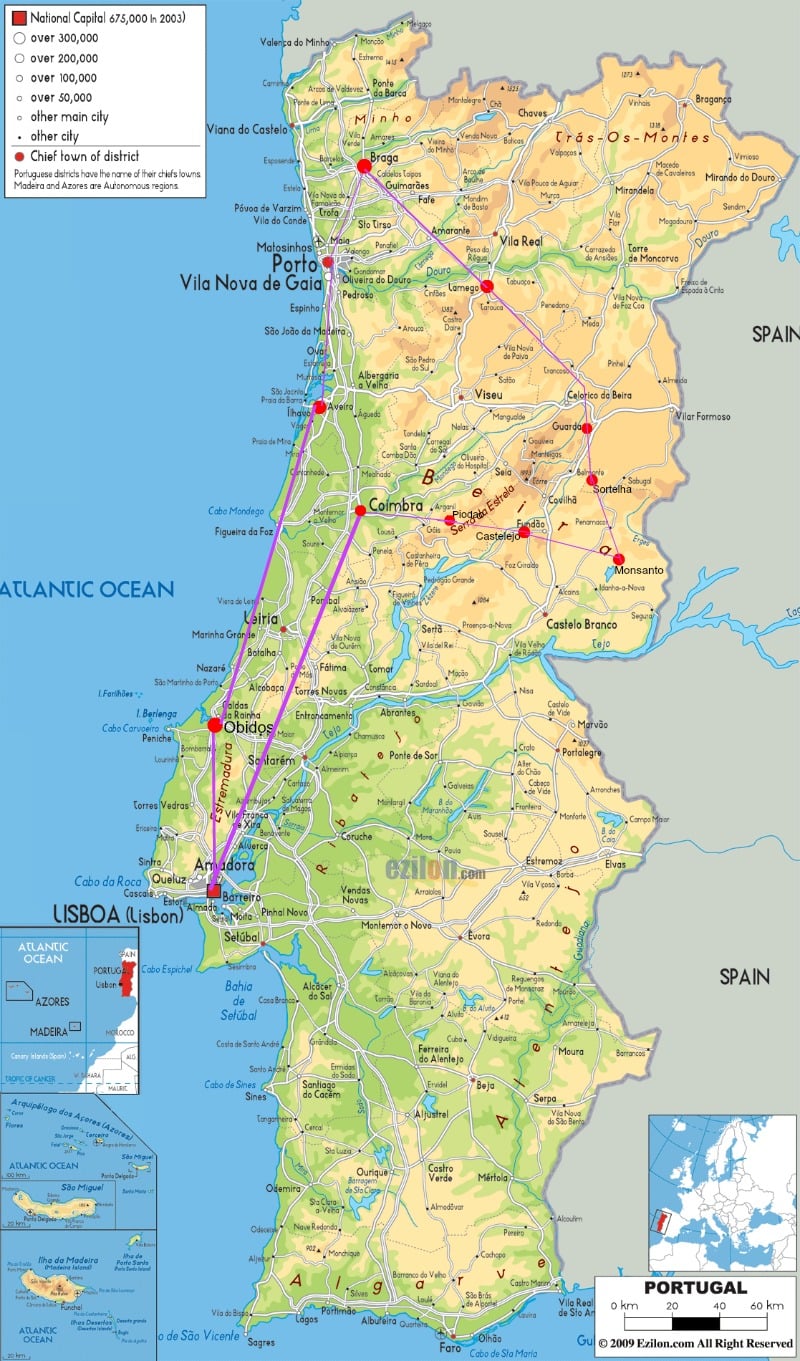
My cousins and sister and I traveled to Portugal at the very end of March. It was a good time of year to do so– very few tourists were in most of the places we visited , and the weather was perfect. Many of the photos shared here were taken either by my cousin Paula , who shares her travel experiences on her Instagram account: Sweet Spot Travels or by my sister Susie , who writes a book review blog at NovelVisits.com.
We began our journey in Lisbon , rented a car , and then we drove immediately to Óbidos and Aveiro. We continued on to the larger city of Porto and toured the smaller town of Braga. Then we made stops in the small towns of Lamego , Guarda and Sortelha. These three places were all visited in one day on our road trip. They weren’t a final destination for lodging for us. Our next stop was the mountain village of Monsanto , where we did stay the night. My cousin’s husband helped create our itinerary by researching all of the regions of Portugal. That’s how we discovered these smaller towns that were all worth visiting while on a road trip! We moved on to see Castelejo , Piódão and Coimbra.
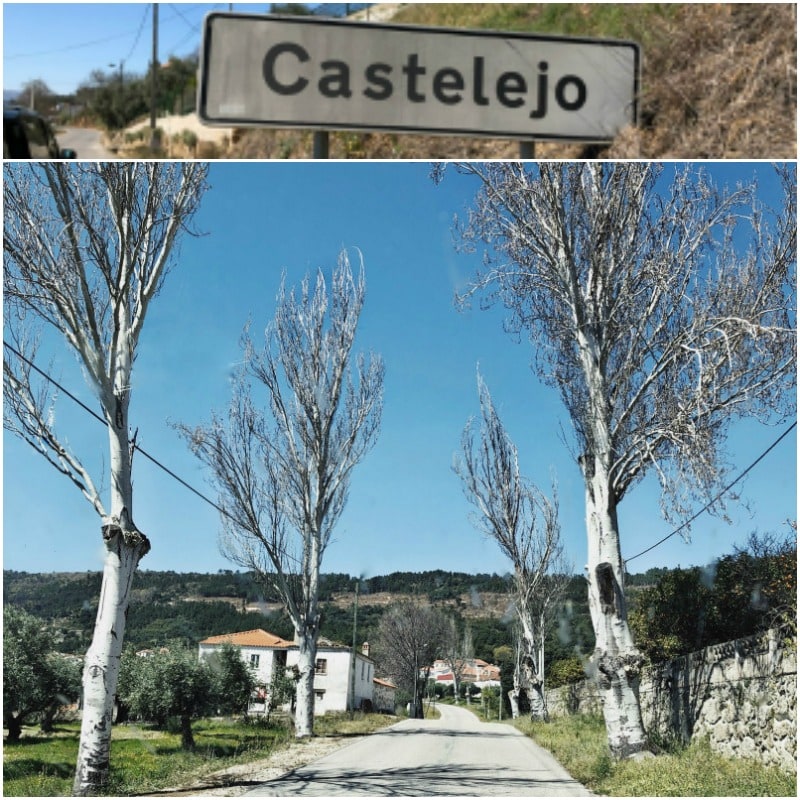
Castelejo isn’t a tourist destination. You see , the whole reason we were visiting Portugal in the first place is because we have some family roots there. Castelejo in particular is the tiny town where our grandfather was born and lived before he immigrated to the United States.

Castelejo is one of those towns that you drive through on your way to another. It’s only a mile or so long. You might see folks sitting in their doorways , watching the cars go by. It’s adorable , but you hardly notice it’s there.

We drove up to this church in the center of town and discovered it was the church that sat directly next to our family home. Residents in Castelejo began to meander about and were watching us take photos and mill about the church. An older woman came over to us , spoke to us in Portuguese and gestured to the door of the church.
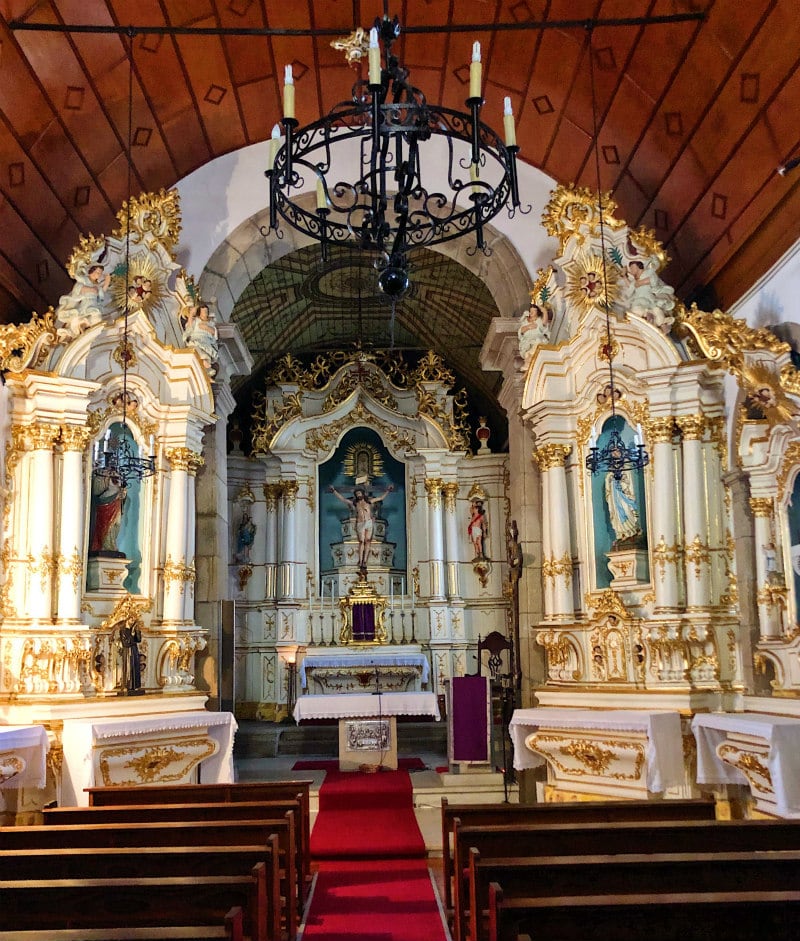
She knew we were interested in seeing the inside , so she opened it up for us. It was really neat to see where our family worshipped so many years ago!
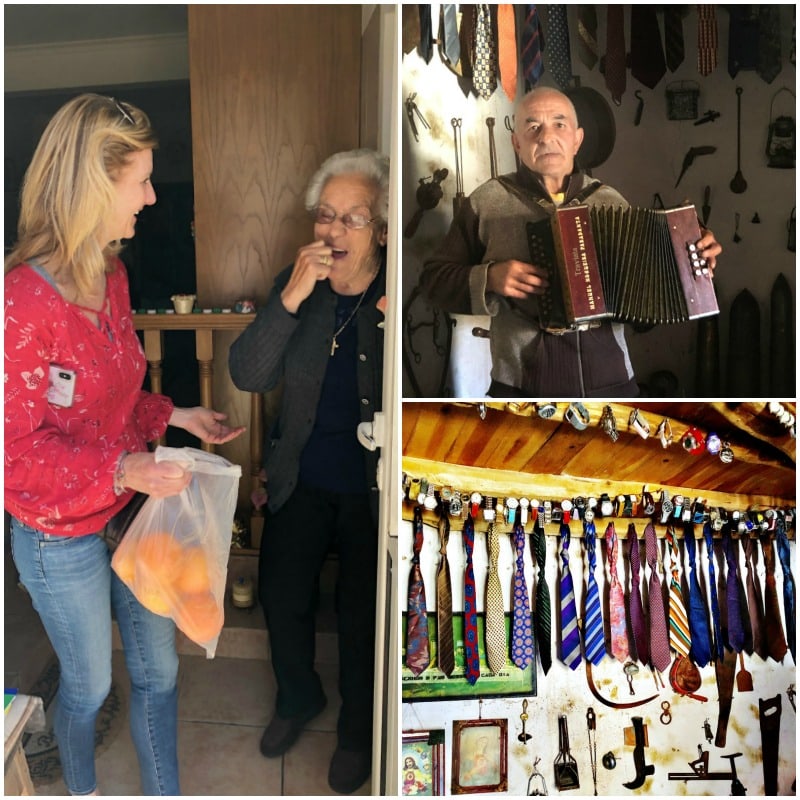
Here’s the lady who was so nice to open the church. She gave us oranges , and then didn’t want us to leave. We ended up following her down the street to the cafe , and she bought us all coffee. All the while , she spoke to us in Portuguese , and we didn’t have any idea what she was saying. Eventually we pulled up “Google Translate” on our phone and were able to communicate why we were interested in their small town.
On our way back to the car , we met the man pictured above. He insisted we come to his “museum.” We were so excited to get a personal tour. The museum was a small room filled with his collections. He played the accordion for us , and proudly showed us his ties , keychains , war missiles and other goodies.
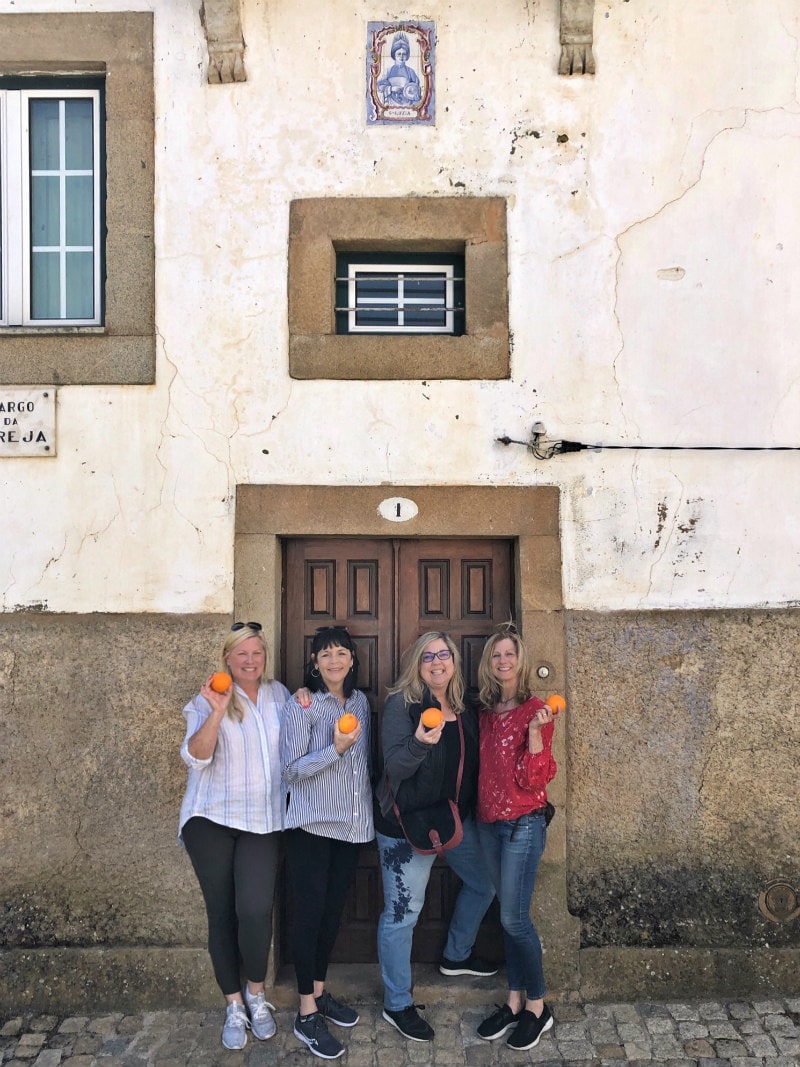
Here we are in front of our grandfather’s childhood home. Unfortunately , no one was home at the time… so we weren’t able to go inside. My cousin did make contact with the person who currently lives in the home , and he says there is a photo of our great grandfather still hanging on the wall inside.

This is a peek at the countryside just outside the town of Castelejo. It was quite an adventure to experience some of our family roots in this small town. We’re so glad we took the time to seek it out.
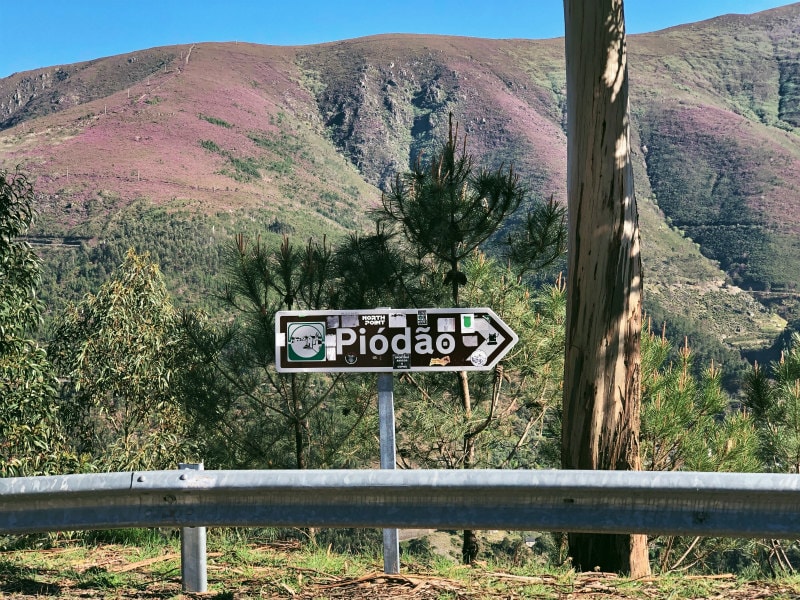
Our next stop was Piódão. If you’re planning a road trip in Portugal , I need to caution you about this section of the drive. It’s quite harrowing. We found ourselves on windy roads that sat very tall over the low-lying valleys- with no safety railings. It was beautiful , but it was kind of a scary drive.

As you’re driving along on those high mountain roads , you’ll finally spy the tiny , isolated village of Piódão. It’s a historical village with no castle. Only about 100 people live in Piódão.

When you drive up to Piódão , you’ll find this out-of-place looking church anchoring the entrance to the village. We parked near the church and set off on foot to explore the village.

The entire village is made of schist (a stone found in great abundance in the region)- the tightly packed cottages , roads and pathways between the houses. It’s a bit of a chore to walk around , minding your step on the uneven , rocky pathways. The people who live in Piódão must be used to it all.



It feels a bit like you’re stepping back in time in Piódão. There wasn’t even a road that brought you to this village until 1974 , and electricity soon followed. People had to hike in and out to access the village. The doors and trim of the houses are all painted blue- mostly because this was the only color paint available (remember… it’s a remote village!)

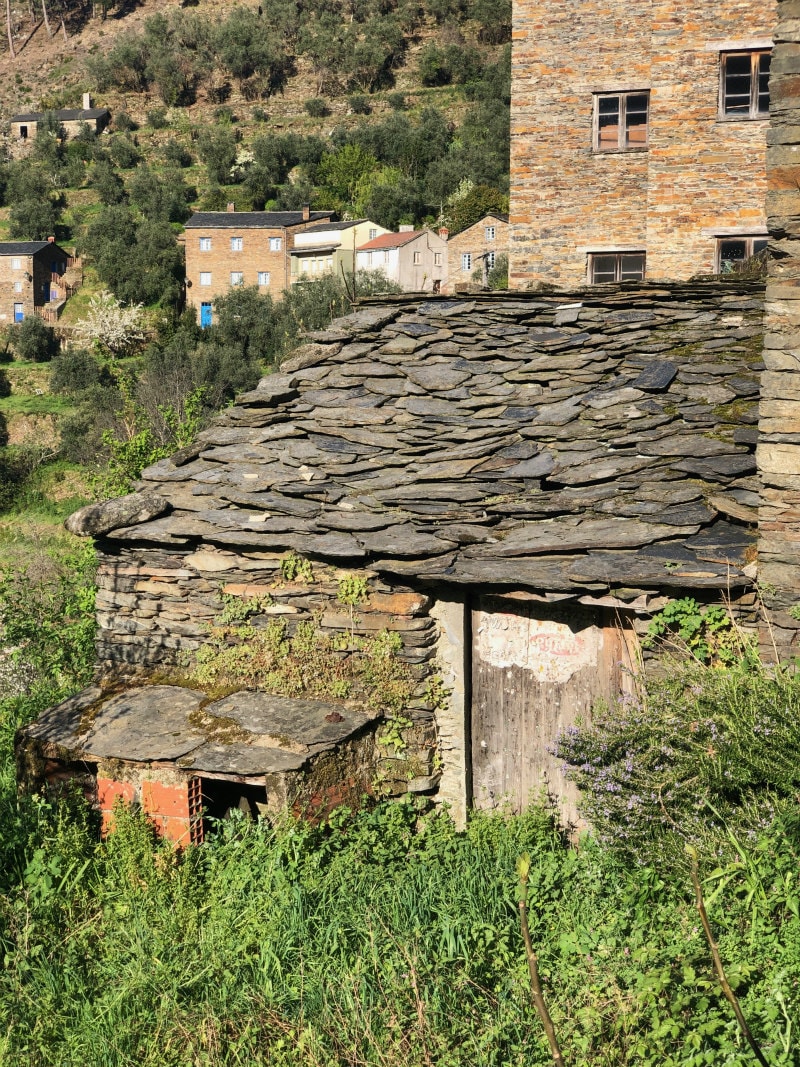
The roofs in Piódão are topped with grey slate. There isn’t a whole lot going on in this little village- some gift shops and a small store. We enjoyed looking around , and bought some treats for our drive to Coimbra.
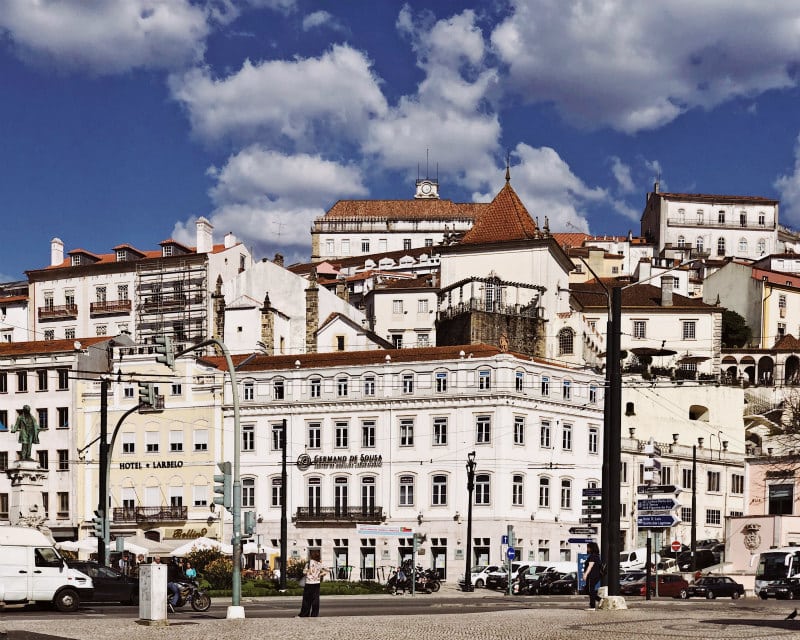
Welcome to Coimbra! We stayed one night here , so we had about a day and a half to look around. Coimbra is considered a college town. It’s two hours north of Lisbon by car. Most people choose to walk around Coimbra to see the city. It’s a little bit hilly , so it’s easy to grab a taxi here and there to get to the upper parts of the city… and then you can plan to walk down.

A few of our relatives attended the University of Coimbra , so we made that our first place to explore. It was founded in 1290 in Lisbon , but the university moved to Coimbra in 1537. You’ll note in the photos below that the students at the university here wear capes. This has traditional roots.
The grounds are beautiful , and there are many things to see on campus:
- The Royal Palace: The Royal Palace of Coimbra was purchased by the University from the Royal Family in 1597. It is here that the most iconic rooms of the University are located , where the most important traditional academic ceremonies take place , but in which some key moments in the History of Portugal also occurred.
- St. Michael’s Chapel: The original chapel dates back probably to 11th century. It is dedicated to St. Michael , like all Portuguese Royal Chapels , because of it (religious) role in defeating the forces of evil.
- The Baroque Library: Built between 1717 and 1728 , it is one of the exponents of the Baroque Portuguese and one of the richest European libraries. It consists of three floors: the Noble floor , richly decorated space , the most emblematic face of the House of the Library; Intermediate Floor , workplace and acted as the guard house; the Academic Prison , which worked here from 1773 until 1834.
- College of Jesus: Built in 1542 , it is the oldest Jesuit college in the world.
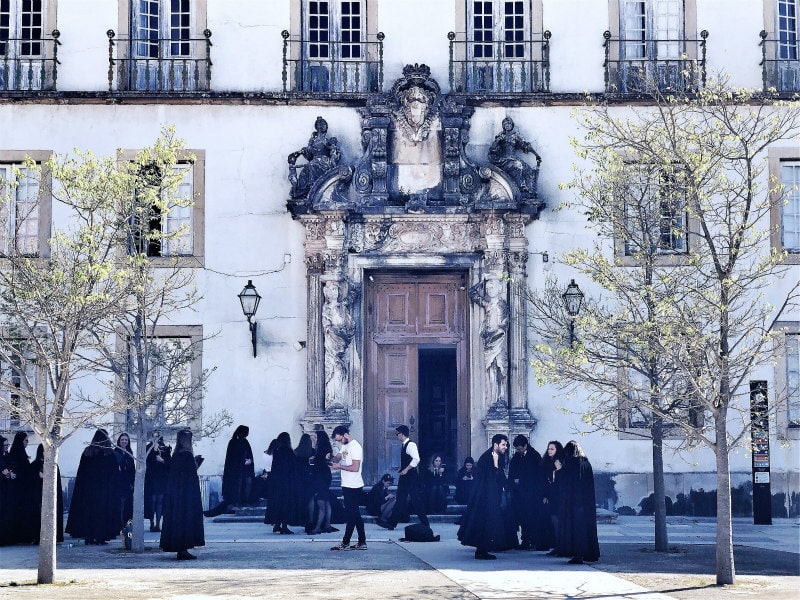
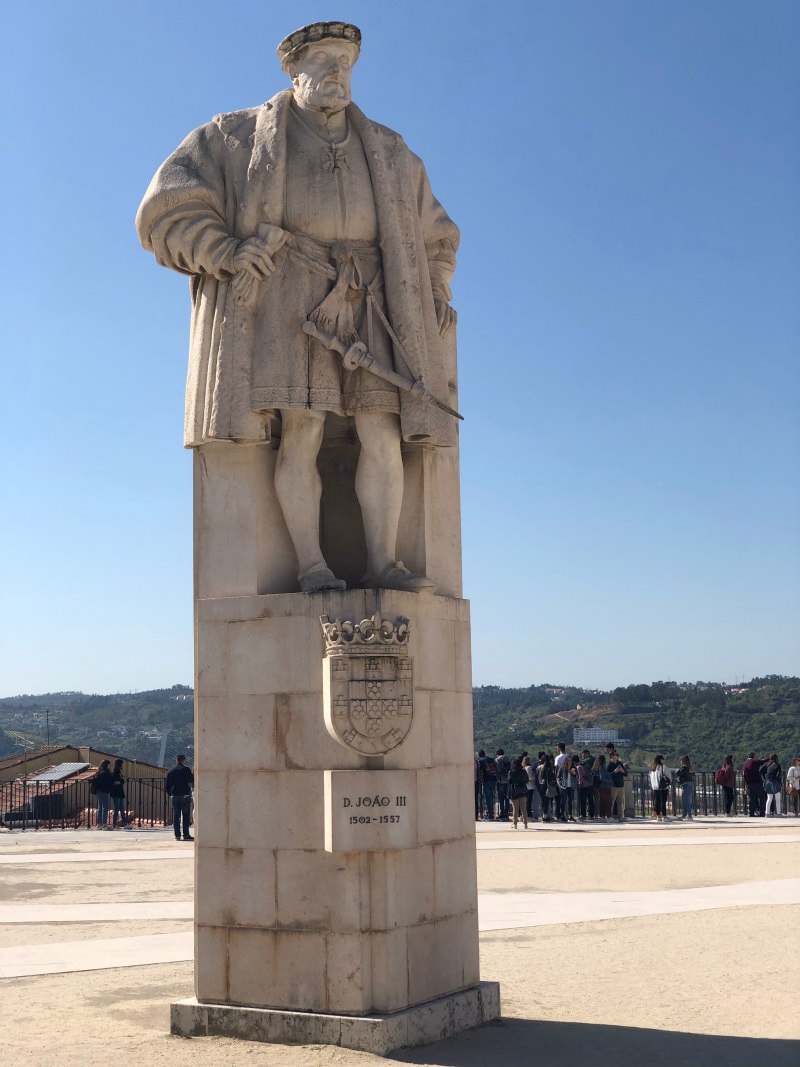
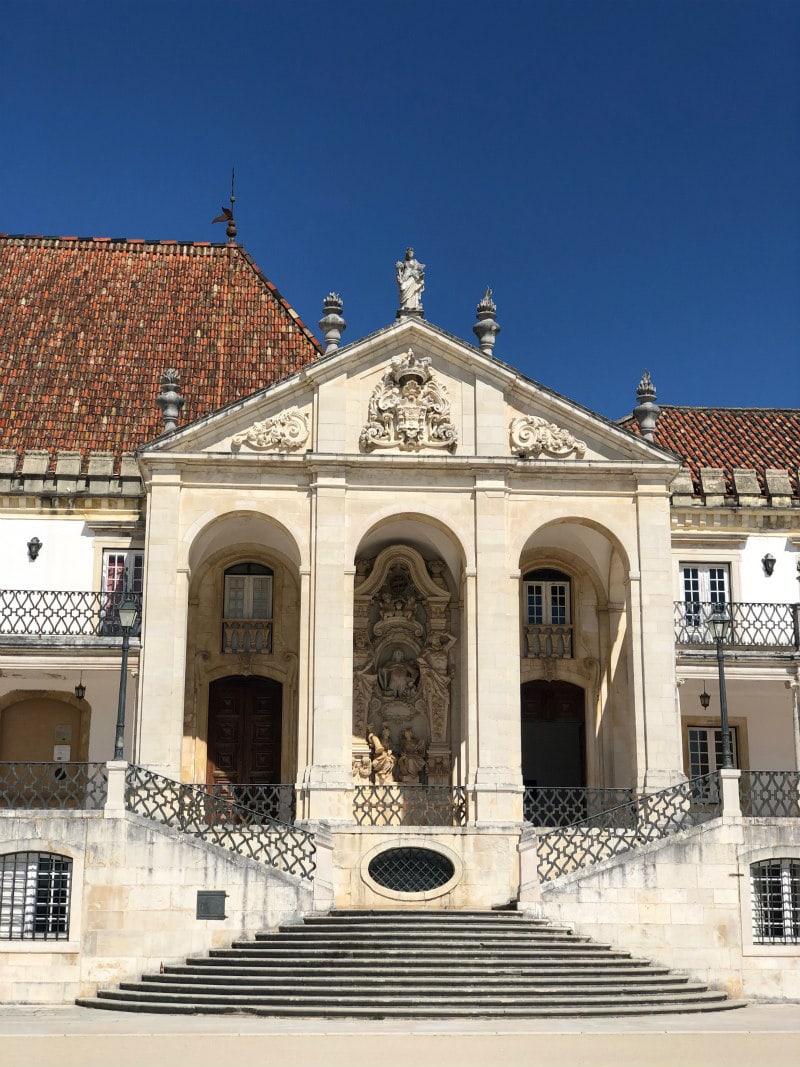


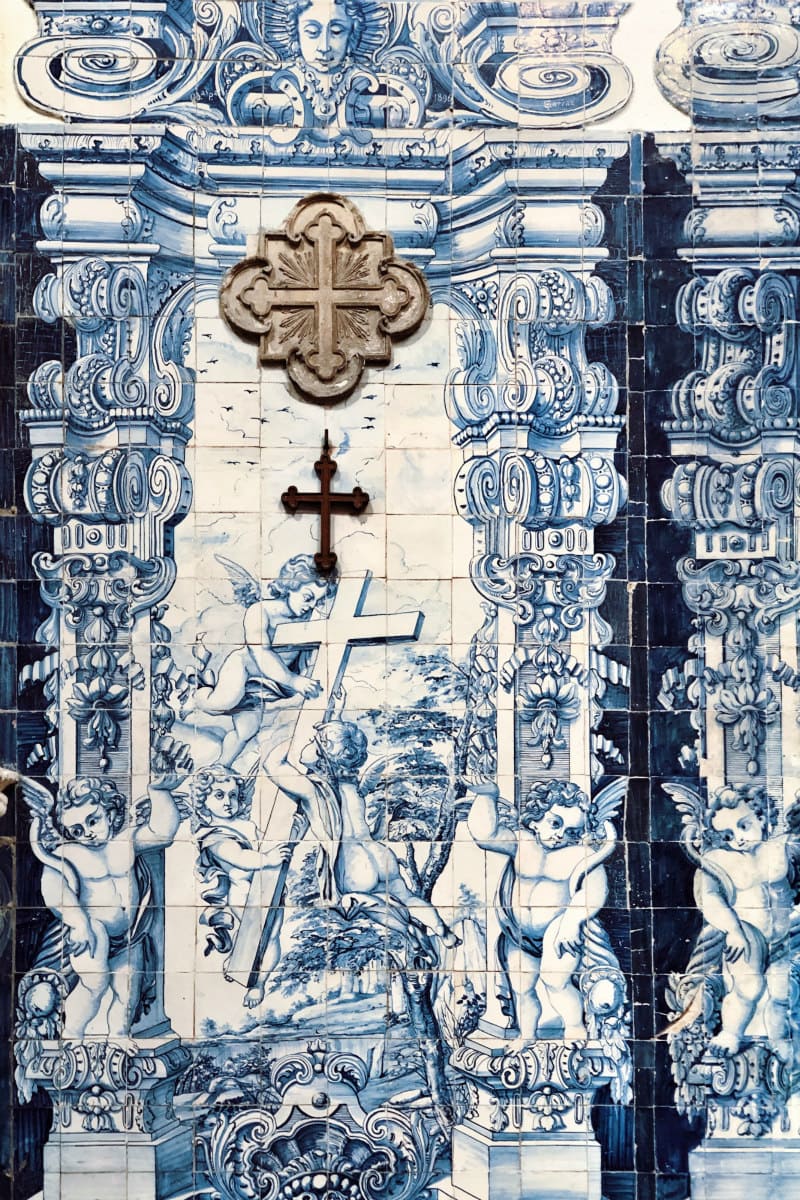
abc
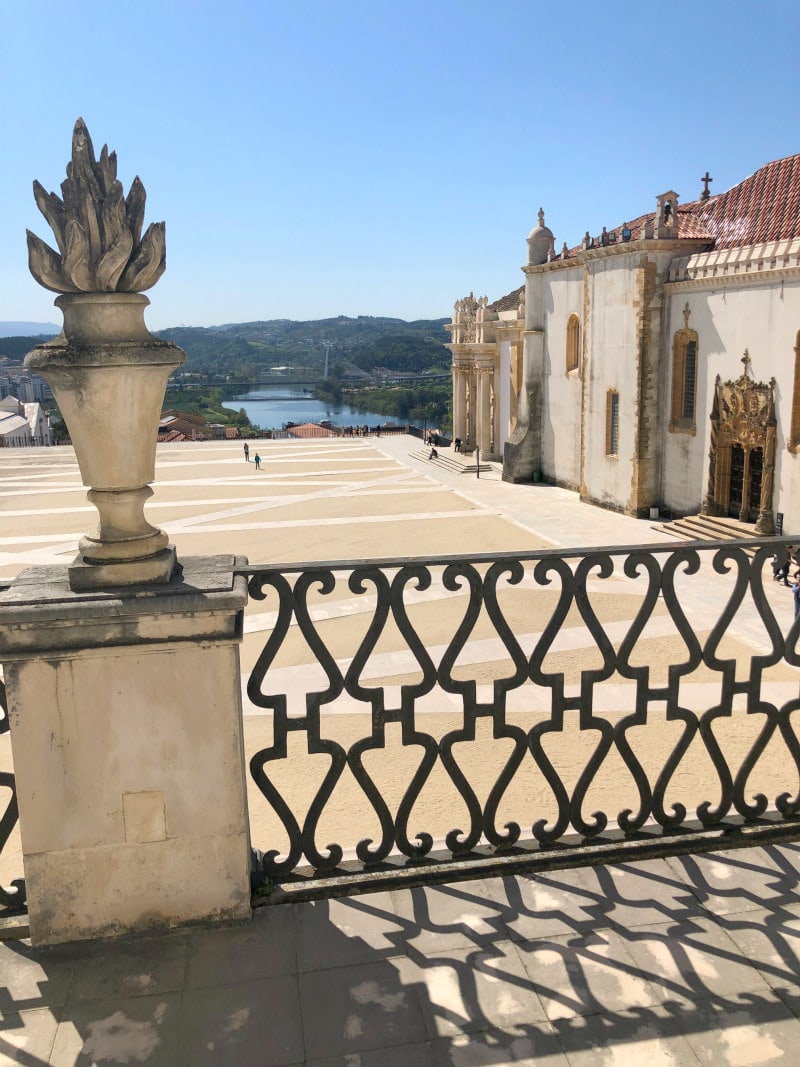
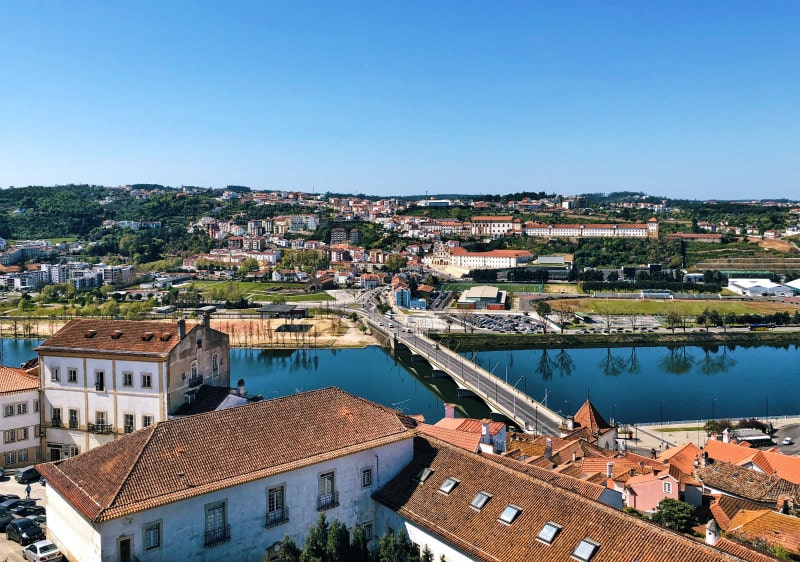
If you choose to visit Coimbra , plan to go to the university to take a look around. It’s worth a visit!

We left the university in search of the Botanical Gardens nearby. Take a look at the pathway- just beautiful!

Here’s a peek at the Botanical Gardens. Much of it was closed when we were there , so we didn’t get to see much. But it’s a pretty , green place.

We left the university to walk down into the town. Lots of neat sights to see along the way…

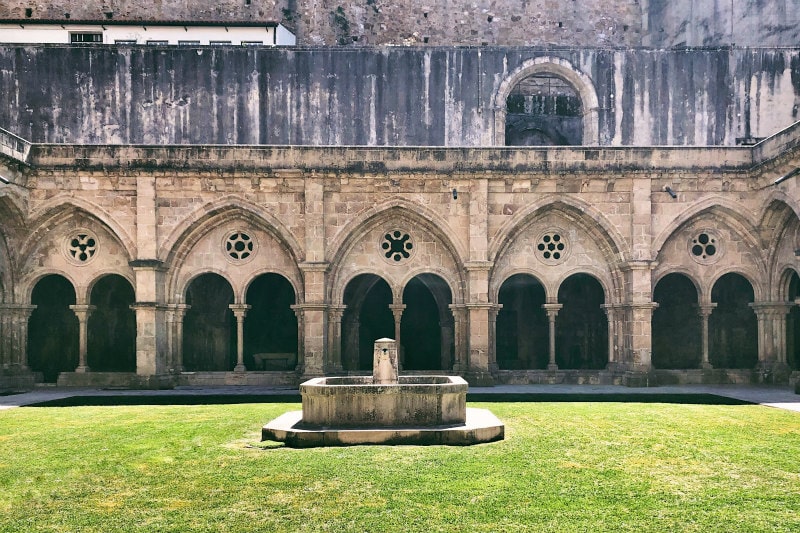


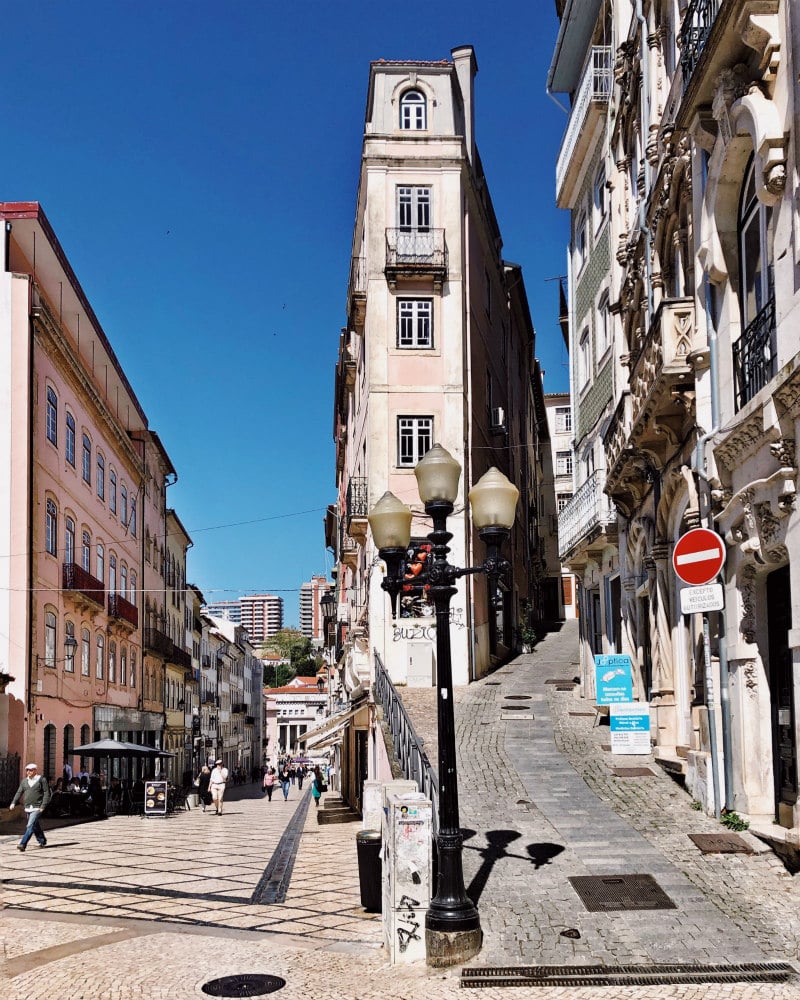

After a long day of walking and touring , it was time to stop for lunch! My travel crew and I found a cute place on a side alley off the main shopping streets of Coimbra: Sete Restaurante.

Great food (I had a smoked salmon citrus salad + sangria)!

In Coimbra , we stayed at the Hotel Oslo. It wasn’t fancy , and it wasn’t expensive. It was a simple , clean , quiet hotel in a good , central location. Since we weren’t going to be in the room much , we didn’t care. It worked for us!
Goodbye Coimbra! I have one more post to write about our road trip in Portugal– our final stop in Lisbon! That’ll be coming up in a couple of weeks.
If you’re interested in reading about the rest of our road trip journey in Portugal , check out these posts:
- Road Trip in Portugal: Óbidos and Aveiro
- Road Trip in Portugal: Porto and Braga
- Road Trip in Portugal: Lamego , Guarda and Sortelha
- Road Trip in Portugal: Monsanto
The post Road Trip in Portugal: Castelejo , Piódão and Coimbra appeared first on Recipe Girl®.